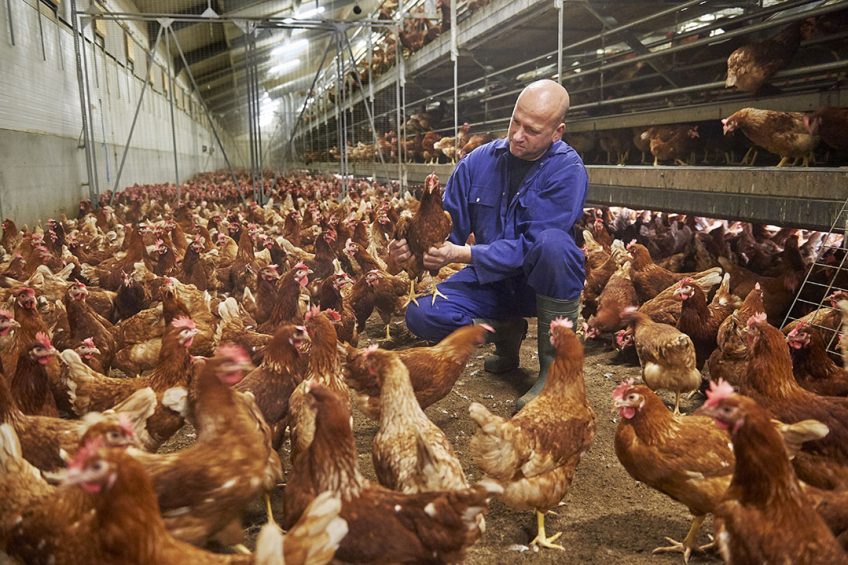Lack of commercialisation of technologies in layers

Several technologies exist which could play a significant role in improving layer productivity but they are being hampered by a lack of commercialisation of systems and evidence of their practical benefits.
Dr David Cutress, project manager at the University of Aberystwyth’s Institute of Biological, Environmental and Rural Sciences PreciseAg Project, said broiler systems had seen far more targeted innovation and development than layer systems. This has generally been focused on affordable innovation as the poultry meat industry was the fastest growing meat sector, particularly in developing countries. Dr Cutress, who is also Knowledge Exchange Fellow for the Welsh Farming Connect programme, said one of the issues for the egg sector was that precision tools, while often affordable, had difficulty in transitioning from prototypes to commercial systems. “A key factor may be that research fails to include manufacturing companies and involves controlled, rather than commercial trials.”
Technologies in Poultry
He pointed to automation systems, which were commercially available in layer management systems, providing feed, egg removal, waste removal and temperature/humidity control automatically, but were often based on arbitrary whole flock analysis values, which therefore needed to be developed further to improve productivity. There were UK companies working to enhance the situation , he added: “Systems such as FLOCKMAN have been introduced commercially integrating multiple variables into one controller.. optimising control of feed levels and lighting with programmed tailored to improve profit margins in broilers.
“Fancom offers commercial automated layer systems which integrate ventilation control, feed weighing/blending, automatic egg counting, animal weighing and water monitoring along with software feedback to suggest management optimisations and improvements to achieve higher productivity. “Whilst currently not automated, the commercial systems offered by Prognostix can evaluate the conditions across a shed, or multiple sheds, including water use, localised temperature, humidity, airflow, light intensity and carbon dioxide levels. These systems provide alerts of health or productivity losses improving farmer intervention, and in future, could be incorporated to allow automated responses. “Automation is also highly prominent in the “back end” of egg production with several commercial systems available to automate egg collecting, sorting, processing and packaging, therefore improving the productivity and efficiency of the sector.”
 The greatest ally in egg production
The greatest ally in egg production
The egg industry is currently dealing with its fair share of challenges. With EU production outstripping consumption and prices being squeezed, producers are looking for more ways to improve the efficiency of their business.
Precision sensors for poultry lags behind
Dr Cutress said there was evidence of growth in interest in precision technology in the poultry sector but it was commercially lagging behind the cattle industry. Movement sensors have been assessed for use in poultry to detect abnormal behaviour and illness, detecting avian flu earlier than using body temperature analysis. Sensors can also determine activity profiles with 98% accuracy across different laying hen breed profiles. Within poultry, over other livestock such as cattle, initial issues in development were linked with requiring small enough technology to mount onto the animal, without causing welfare issues. But technology can now be made smaller, even allowing the development of injectable capsules to detect movement as well as temperature and heart rate of birds.
Acoustic sensors have seen significant development, he added, commercially in the pig sector but increasingly in the poultry industry too. In a study on Hyline brown layers in a conventional cage system, acoustic detection along with computer algorithms were able to detect stress and classify it between physical and mental with 96.2% accuracy. Further studies have demonstrated acoustic data can be used to detect pulmonary diseases in poultry and even to detect detrimental feather pecking in layers.
 Welfare versus natural behaviour: A fine balance
Welfare versus natural behaviour: A fine balance
Colony egg systems are often considered lower welfare, but by some measures can offer birds easier access to feed and water, and less risk of disease, as delegates at the latest meeting of the UK Branch of the World’s Poultry Science Association heard.
Image analysis also offers a method of constant non-invasive monitoring – seen through Tibot, Octopus Robotics and Poultrybot – which utilise image analysis, as well as robotic systems, though these have been focused on the broiler sector. “Development has also been performed in using infra-red thermology to assess temperature changes in hens, towards alerting to illness and detecting feather coverage/damage. Optical flow image analysis techniques can predict flocks which will commence damaging feather pecking activities several weeks in advance, allowing controls to be put in place.”
Radio Frequency identification RFID
This is currently used in the cattle and sheep sectors in the UK as an identification method, but Dr Cutress said it could have substantive roles in the poultry industry: “Due to defined boundaries within hen houses, it is suggested that RFID could act as a localisation/monitoring tool, whereby communication of a passive RFID tag on the ankle of a hen with a fixed active RFID receiver could, for example, provide data that a hen had visited a feed or water station.
“RFID could be utilised in weighing birds in nesting situations or at feeders to look at growth patterns and alert individual health concerns. It already has been incorporated into a nest box system, allowing for accurate detection of individual bird egg-laying statistics, offering opportunities to improve productivity, by managing specific birds, or culling unproductive animals.”












